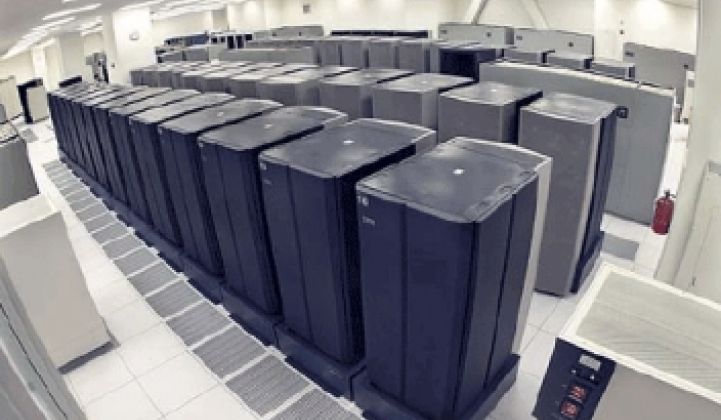Live fast. Die young.
It's become the informal motto of mosquitoes and hair band drummers appears to becoming a mantra among the companies that make and sell servers. Servers are becoming progressively energy efficient, the argument goes. By replacing them on a more rapid clip, banks, websites and others with big data centers can cut the money they have to spend to power air conditioners, computers, storage systems, power supplies and other devices inside datacenters.
"We will see much more consistent hardware refreshes on a three to four year cycle," said Jon Haas director of the Eco-Technology Program office in Intel's Digital Enterprise Group at Intel. "A three to four year time frame will return much more on your investment than trying to do longer cycles of five to six years."
Now, IT managers generally upgrade on a five to seven year cycle.
"This is already partially happening," adds Subodh Bapat the vice president at Sun Microsystems who heads up the company 's energy and environmental efforts at Sun Microsystems. "While it doesn't necessarily follow that the server replacement cycle will shorten just because of power savings [the recession exerts counterpressure to continue using IT equipment that is fully exhausted past its normal depreciation cycle], it is indeed the case that the ROI for new server purchases and new data center build outs is being partially justified by energy savings."
A reason to upgrade would be greeted with huzzahs among server makers. The server business has been mired in an existentialist hell for the last several years. Unit sales have continued to climb, but revenue and profits have stayed flat or declined. In the third quarter of last year, for example, unit sales rose 4.4 percent, but revenue declined by more than five percent.
Rising energy cost is generally considered the primary driver of the trend. Any way you look at it, data centers aren't very efficient. Close to half of the power in an average data center goes toward fans and air conditioner. That air conditioning, however, exists to eliminate waste heat, which is really power that was purchased but not consumed in an optimal or functional way by a computer. Data centers also need to convert power from AC to DC. Cooler, more energy efficient servers thus can have a ripple effect on total energy consumption.
Any shift to shorter life cycles will likely be more apparent in the dense data centers owned by financial institutions or large commerce sites, said Vlad Rozanovich, Director of AMD Commercial Business for the Americas.
"Fifteen watts per server over 10,000 servers in a data center will help," he said. "When you start rolling out 10,000 servers, that it where it will make a difference."
Like Intel, AMD puts far more emphasis on energy consumption on its server chips than in the past. In fact, it's actually easier to get a sense of power consumption than speed now from both Intel and AMD. AMD segments its processors into four categories: extremely efficient (40 watts average consumption), highly efficient (55 watts) efficient (75 watts) and performance-optimized (105 watts). New generations of parts exhibit more performance, but have to fit into these power envelopes.
Rebates help as well. Both Yahoo and NetApp have built energy efficient data centers in recent years that have been paid for by utility subsides. Pacific Gas & Electric gave NetApp $1.4 million to retrofit its data center. The power savings come to around $1.2 million. PG&E also helped Sun's sales in 2007 by offering rebates to customers that bought servers with the certain multicore, multithreaded servers.
The Energy Star rating for servers that came out earlier this month will likely inspire a new round of rebates, predicted Haas.
Virtualization, indirectly, will also help, added Karen Alonardo, founder and COO at CSRware. With virtualization, the hardware, data and software become further segmented. "If the IT guys don't have to worry about migrating data, they are less resistant" to getting new computers, she said.
Additionally, the life cycle of servers could be curbed by the increasingly less comfortable environments that data center managers are willing to build for them. ASHRAE, the American Society of Heating, Refrigerating and Air Conditioning Engineers, has raised and will likely continue to raise the temperature bands for data centers in an effort to cut power consumption. "There is a desire to run data centers hotter and it will play more and more of a part," said Haas.
Most data centers historically have probably been overcooled, so raising the temperature may not harm machines. But as the temperature climbs, so will the increased frequency of heat-induced failures.



